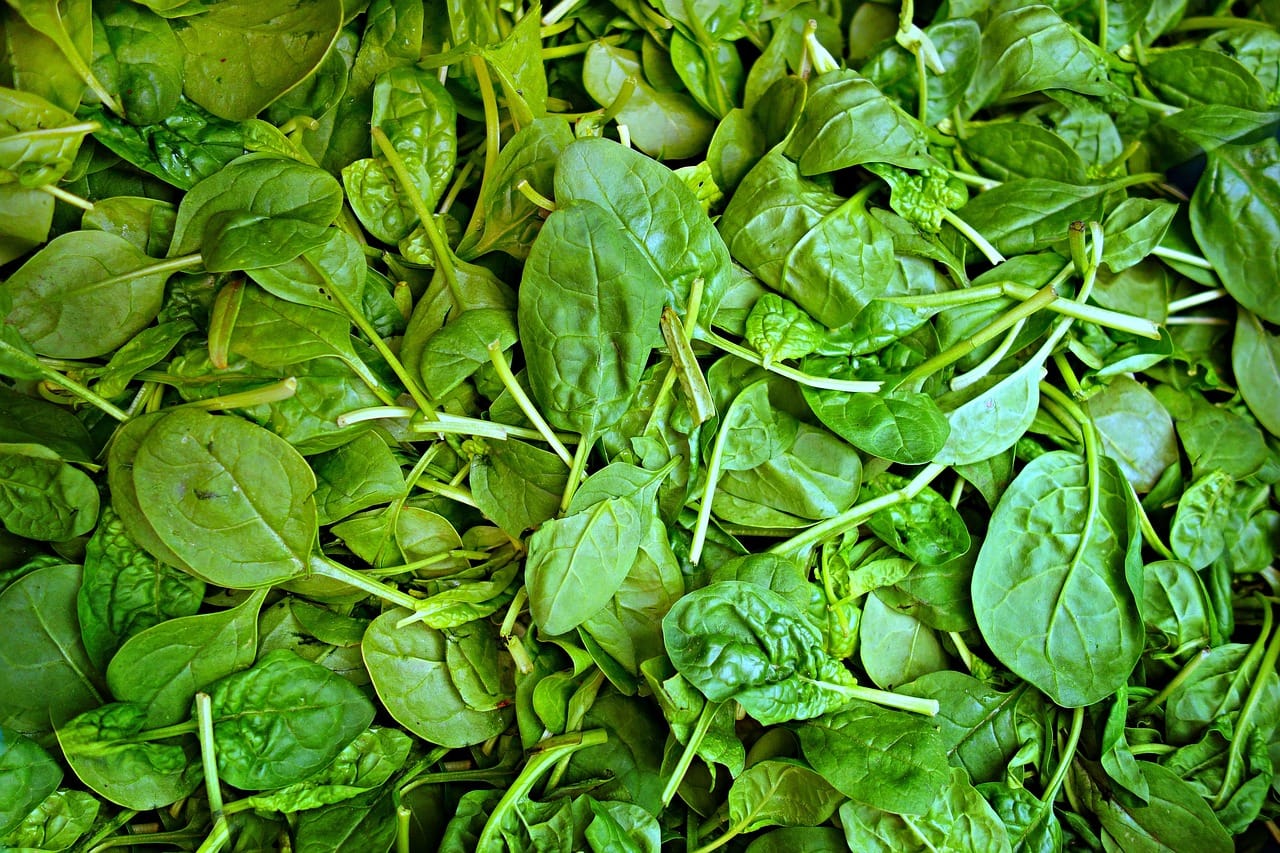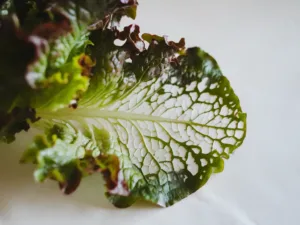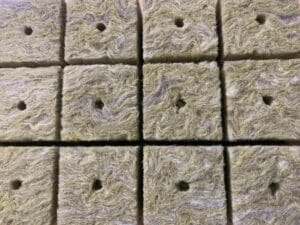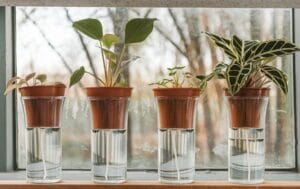Spinach is a true superfood—packed with vitamins, minerals, and antioxidants. It’s versatile in salads, smoothies, and many dishes. But how about growing your own fresh spinach at home without soil? Hydroponics makes it possible! With this method, you control the nutrients and environmental conditions directly, allowing spinach to grow faster and be harvested more frequently. This article covers everything you need to know to successfully grow spinach hydroponically—from choosing the best varieties to harvesting and care.
Choosing Varieties: The Right Spinach Types for Your Hydroponic Garden
Selecting the right spinach variety is the first step to a successful harvest. In hydroponics, there are some features you should consider: growth form (small-leaved vs. large-leaved) and resilience (robust vs. delicate). These characteristics determine not only how much space the plant needs but also how easy it is to care for and how high the yield will be.
1. Small-leaved and Robust Spinach Varieties:
Small-leaved and robust varieties are ideal for beginners and smaller hydroponic systems. They grow compactly and are less susceptible to diseases and pests, making them easier to care for.
- ‘Baby’s Leaf’: This variety is compact and grows quickly. It has tender, small leaves and is very resilient to changing conditions. Perfect for growing in small systems and dense plantings.
- ‘Bloomsdale Long Standing’: A classic variety known for its resilience and compact growth. It can withstand fluctuations in nutrient levels, making it ideal for beginners.
- ‘Regiment’: This variety has smaller but robust leaves. It is known for its high disease resistance and is excellent for hydroponic cultivation under various conditions.
2. Small-leaved and Delicate Spinach Varieties:
These varieties offer more tender leaves and a more intense flavor but are more sensitive to environmental conditions and pests. They require a more stable hydroponic environment and a bit more care.
- ‘Red Cardinal’: A beautiful variety with red leaf veins and a mild, sweet taste. However, it is prone to downy mildew and requires good air circulation.
- ‘New Zealand Spinach’: Despite its name, it’s not a true spinach but grows similarly. Very tasty and tender but sensitive to nutrient fluctuations and higher temperatures.
- ‘Savoy’: This variety has crinkled leaves that are particularly tender. It is somewhat more demanding, requiring consistent conditions for optimal growth.
3. Large-leaved and Robust Spinach Varieties:
Large-leaved and robust varieties are ideal for larger hydroponic systems. They provide a high yield per plant and are resistant to fluctuations.
- ‘Giant Winter’: Produces large, juicy leaves and is very robust against cold and changing conditions. Ideal for growing in larger systems.
- ‘Tyee’: Very resistant to downy mildew and a strong producer. This variety is suitable for cultivation in various climates and conditions.
- ‘Viroflay’: An old variety with very large leaves and intense flavor. It is robust and provides a high yield but requires a bit more space.
4. Large-leaved but Delicate Spinach Varieties:
These varieties are particularly known for their fine taste and texture but require more care and attention, especially regarding temperature and nutrient supply.
- ‘Merlo Nero’: Dark green, large leaves with a slightly nutty flavor. This variety requires constant temperatures and a stable nutrient supply.
- ‘Matador’: Known for its tender but large leaves. This variety is sensitive to temperature fluctuations and needs a lot of light.
- ‘Butterflay’: A somewhat more delicate variety with soft, buttery leaves. It requires optimal conditions for vigorous growth.
Suitable Hydroponic Systems for Spinach
The choice of the right hydroponic system depends on the variety and space conditions. Spinach can be grown in various systems, but not every system is ideal for every variety.
- Nutrient Film Technique (NFT): Ideal for compact and robust varieties. The system provides continuous nutrient supply and is easy to maintain.
- Deep Water Culture (DWC): A popular system for large-leaved varieties. The plant roots are constantly in a nutrient solution, promoting rapid uptake and vigorous growth.
- Kratky Method: A simple method without pumps, suitable for beginners and compact varieties. Ideal for smaller spaces or systems where little maintenance is required.
Cultivation: The First Step to a Successful Spinach Harvest
Growing spinach is straightforward if you follow the right steps. Since spinach is a dark germinator, the seeds need a dark environment to germinate. Use a mini greenhouse or a seed tray to create optimal conditions.
- Temperature: The ideal germination temperature is between 15–20 °C. Too high temperatures can reduce the germination rate.
- Light: Spinach does not need direct lighting during germination. However, once the seedlings appear, they need 12–14 hours of light daily.
- Substrate: Rock wool is an excellent substrate for growing spinach, as it remains moist and aerates the roots well.
Substrate: The Foundation for Healthy Root Growth
Choosing the right substrate is crucial for growing spinach in hydroponics. A good substrate provides stability, aeration, and moisture without providing additional nutrients.
- Rock Wool: A popular substrate for most hydroponic crops. It offers excellent water retention and is sterile, protecting the seedlings.
- Coconut Fiber: This substrate is sustainable and offers good air and water permeability. However, it is important to ensure it is rinsed and pH-neutral.
- Perlite: A lightweight substrate that retains water well and provides additional aeration. Ideal for combining with other substrates.
Temperature, Light, pH & EC: Optimal Conditions for Spinach
Spinach thrives best under cooler conditions. At higher temperatures, it can bolt (form flowers) quickly, affecting the taste and leaf quality.
- Temperature: Optimal between 15–20 °C. Temperatures above 24 °C should be avoided.
- Light: 12–14 hours per day. Use LED grow lights for the best results.
- pH Level: Ideal between 6.0–7.0. A stable pH is crucial as fluctuations can affect nutrient uptake.
- EC Level (Electrical Conductivity): 1.8–2.3 mS/cm. Keep it slightly lower for young plants and gradually increase as leaf growth progresses.
Fertilizer: The Nutrient Base for Juicy Spinach Leaves
For hydroponic spinach cultivation, a balanced fertilizer is essential. The plants need a broad spectrum of macro and micronutrients.
- Macronutrients: A fertilizer high in nitrogen promotes leaf growth. Phosphorus and potassium support root development and overall plant health.
- Micronutrients: Iron, magnesium, and calcium are essential for healthy spinach growth. Deficiencies often manifest as yellowed or deformed leaves.
- Dosage: Start with a lower concentration and gradually adjust as the plants grow.
Harvest: How and When to Best Harvest Your Spinach
Spinach can be harvested as early as 4–6 weeks after cultivation. The harvest time varies slightly depending on the variety and growing conditions. The right method ensures a continuous harvest.
- Leaf-by-Leaf Harvest: Harvest the outer, older leaves first. This encourages the growth of new leaves and extends the harvest time.
- Whole Plant Harvest: If needed, the entire plant can be harvested, especially if a system reset is necessary.
- Storage: Spinach is best fresh but can also be stored in the refrigerator for a short time or blanched and frozen.
Diseases and Pests: Prevention and Control
Even in hydroponics, spinach is not free from diseases and pests. The most common problems are downy mildew and aphids.
- Downy Mildew: This fungus often occurs in high humidity. Good ventilation and the use of fungicides can help control the problem.
- Aphids: Small insects that can weaken and deform leaves. Neem oil or natural predators like ladybugs help keep them in check.
- Prevention: Clean conditions, regular monitoring, and good air circulation are the best measures to prevent diseases.
Plant-Specific Tips/Notes: Tricks for Advanced Growers
For experienced gardeners, there are some tips to maximize growth and harvest:
- Diluted Nutrient Solutions: In cases of rapid growth, diluting the nutrient solution can help slow the plant down and increase leaf density.
- Companion Plants: Herbs like basil or cilantro can grow well alongside spinach and repel pests.
- Light Intensity: Vary the light intensity to achieve the best results for each variety. Some varieties prefer less direct light.
Conclusion: Your Hydroponic Spinach Garden – Fresh, Healthy, and Simple!
Growing spinach hydroponically is a fantastic way to enjoy fresh greens at home. With the right choice of variety, suitable system, and optimal care, nothing stands in the way of a bountiful harvest. Spinach is just the beginning—the world of hydroponics offers countless possibilities, and perhaps the next vegetable you grow is already in the planning.
Get ready to enjoy fresh and healthy leaves straight from your own “garden”!







